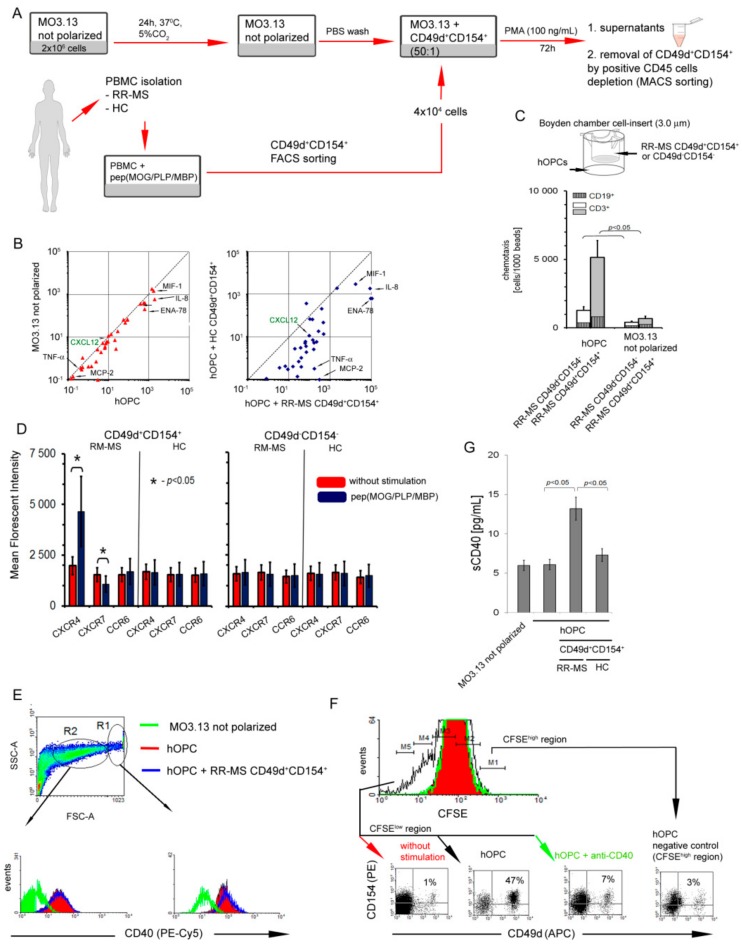Figure 2.
Interaction of RR-MS CD49d+CD154+ lymphocytes with maturing human oligodendrocyte precursor cells (hOPCs) generates positive proinflammatory feedback loop. (A) Human MO3.13 cells stimulated by phorbol 12-myristate 13-acetate (PMA), as the cellular model of OPC polarization to mature oligodendrocytes (OLs), and RR-MS CD49d+CD154+ lymphocytes induced from myelin peptide-stimulated RR-MS PBMCs were used for chemotaxis and co-culture experiments. (B) hOPCs released chemoactive factors (left panel), of which concentrations are amplified in the presence of RR-MS contrary to HC CD49d+CD154+ lymphocytes (right panel). Data are presented as means ± SD from independent experiments in RR-MS n = 10 and HC n = 10. (C) RR-MS CD49d+CD154+, opposite to CD49d-CD154- lymphocytes, were more intensively recruited by hOPCs. RR-MS lymphocytes were CD3+ and CD19+ cells (T:B 10:1). Bars are presented as means ± SD calculated from independent experiments in RR-MS n = 4. (D) During myelin peptide-induced proliferation of RR-MS CD49d+CD154+ lymphocytes, they acquired CXCR4 and lost CXCR7. Bars are presented as means ± SD from independent experiments in RR-MS n = 4 and HC n = 4. (E) hOPCs during maturation overexpressed CD40. As the morphology of MO3.13 cells during polarization was not homogenous, two regions (R1 and R2) were analyzed. The example of flow cytometry analysis of one of four independent experiments. (F) pepMOG/proteolipid protein (PLP)/myelin basic protein (MBP)-treated hOPCs cultured with RR-MS PBMCs stimulated proliferation of CD49d+CD154+ subpopulation, dependent on CD40-CD154 interaction. The example of flow cytometry analysis of one of four independent experiments. (G) Co-culture of RR-MS CD49d+CD154+ lymphocytes with hOPCs resulted in increased sCD40 concentration in supernatants. Data are presented as means ± SD from independent experiments in RR-MS n = 10 and HC n = 10.

